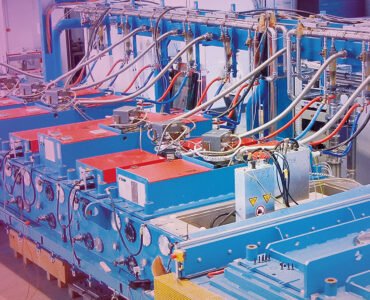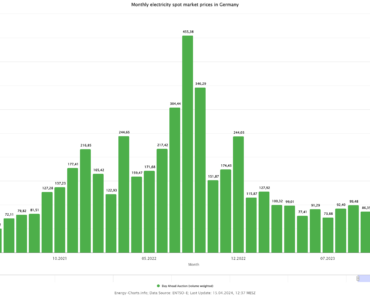Heat pumps are only suitable for new buildings or for buildings that have undergone an extensive energetical refurbishment! This is a common view that can be considered disproved in many respects today.
Fortunately, one could say, because especially the existing buildings are crucial to achieve climate neutrality in the future. Around 75 percent of residential space is still heated with fossil fuels today. In the next two to three decades, these homes will also have to be completely supplied by CO2-free heating. Alongside CO2-free district heating, the heat pump is the key technology here.
The more studies, scenarios and forecasts ascribe an important, even a decisive, role to heat pumps in decarbonizing the building sector, the more often these questions arise: How can heat pumps be used in existing buildings at all? Do all existing buildings need to be extensively retrofitted first? Are heat pumps able to guarantee the high flow temperatures required? Can heat pumps in existing buildings achieve reasonable efficiency values at all? Is the operation of heat pumps in existing buildings ecological at all?
The goal of this blog post series “Heat Pumps in Existing Buildings”, commissioned by the Stiftung Klimaneutralität in Germany, is to provide well-founded answers to these and other questions, to counter prejudices and to create a good basis for future decision-making.
The twelve blog posts, which will be published weekly, are based on the knowledge and experience gained from almost twenty years of heat pump research at the Fraunhofer Institute for Solar Energy Systems. During this time, Fraunhofer ISE has, among other things, monitored and analyzed roughly 300 heat pump systems in the field.
Especially our most recent monitoring projects were dedicated to heat pumps in existing buildings.
Our research clearly shows that heat pumps are capable of providing the necessary heat even in unrefurbished or only slightly refurbished existing buildings – while being efficient enough to achieve clear ecological advantages over fossil-fuelled boilers.
Certainly, the challenge of finding a suitable technical solution and implementing it successfully is greater in some cases than in others. However, these few cases should not call into question the general usefulness of heat pumps in existing buildings. Equally undoubtedly, heat pump installation should become faster and easier, and operation even more efficient and economical. The heat pump industry is already working precisely in this direction.

In other words, we should not wait any longer, but focus on a solution that is already technologically mature and will make a decisive contribution to decarbonizing the heating sector.
In the following blog posts, the various arguments against heat pumps in existing buildings will be analyzed and contrasted with various research results. For those who want to dive deeper into the topic, there is a reading list at the end of each week’s post.
In the next post we will discuss the supposed main exclusion criterion for heat pumps in existing buildings – the high flow temperatures.
The Stiftung Klimaneutralität und Fraunhofer ISE wish you an interesting read!
Further Reading:
Overview on the range of applications for heat pumps.
Episode 2 of the series on heat pumps in existing buildings: Are heat pumps able to deliver sufficiently high temperatures in the heating circuit?
Studies:
Prognos, Öko-Institut, Wuppertal Institut (2020): Klimaneutrales Deutschland. Study commissioned by Agora Energiewende, Agora Verkehrswende and Climate Neutrality Foundation (https://www.stiftung-klima.de/de/themen/klimaneutralitaet/).
Fraunhofer ISE 2020: Pathways to a Climate Neutral. The German energy transition in the context of societal behaviors. (https://www.ise.fraunhofer.de/en/publications/studies/paths-to-a-climate-neutral-energy-system.html)
Ausfelder et al. (eds.): Sektorkopplung – Untersuchungen und Überlegungen zur Entwicklung eines integrierten Energiesystems (Schriftenreihe Energiesysteme der Zukunft), Munich 2017. ISBN: 978-3-9817048-9-1. (https://energiesysteme-zukunft.de/fileadmin/user_upload/Publikationen/PDFs/ESYS_Analyse_Sektorkopplung.pdf)
Project reports:
Günther et al, Fraunhofer ISE (2020) Heat pumps in existing buildings: results from the research project “WPsmart im Bestand”. https://www.ise.fraunhofer.de/content/dam/ise/de/downloads/pdf/Forschungsprojekte/BMWi-03ET1272A-WPsmart_im_Bestand-Schlussbericht.pdf
Prinzing et al, OST – Ostschweizer Fachhochschule 2020: report “Field measurements of heat pump systems heating season 2019/20”. https://www.ost.ch/fileadmin/dateiliste/3_forschung_dienstleistung/institute/ies/wpz/sonstige_wichtige_dokumente/2020_jahresbericht_feldmessungen.pdf
Header picture: Bundesverband Wärmepumpe (BWP) e.V.
Overview of all blog posts
- epsiode 2: Are heat pumps able to deliver sufficiently high temperatures in the heating circuit?
- episode 3: Does a house have to be renovated first in order to install a heat pump?
- episode 4: How well do heat pumps really work in existing buildings?
- episode 5: How much does the use of back-up heaters reduce the efficiency of heat pumps?
- epsiode 6: How well have heat pumps performed in practice in partially refurbished and unrefurbished buildings?
- episode 7: How ecological are heat pumps in existing buildings?
- episode 8: Isn’t heating with heat pumps too expensive?
- episode 9: Is it worth waiting for technological developments before switching to a heat pump?
- episode 10: Is it better to combine a heat pump with fossil heating in some cases?
- episode 11: Can heat pumps only be used in one- and two-family houses?
- episode 12: How do we get more heat pumps in existing buildings?














This is a brilliant series and incredibly relevant to the challenges we face in the UK too!
Thank you very much for sharing your findings and thoughts – I look forward to the whole series –
Great article, many thanks